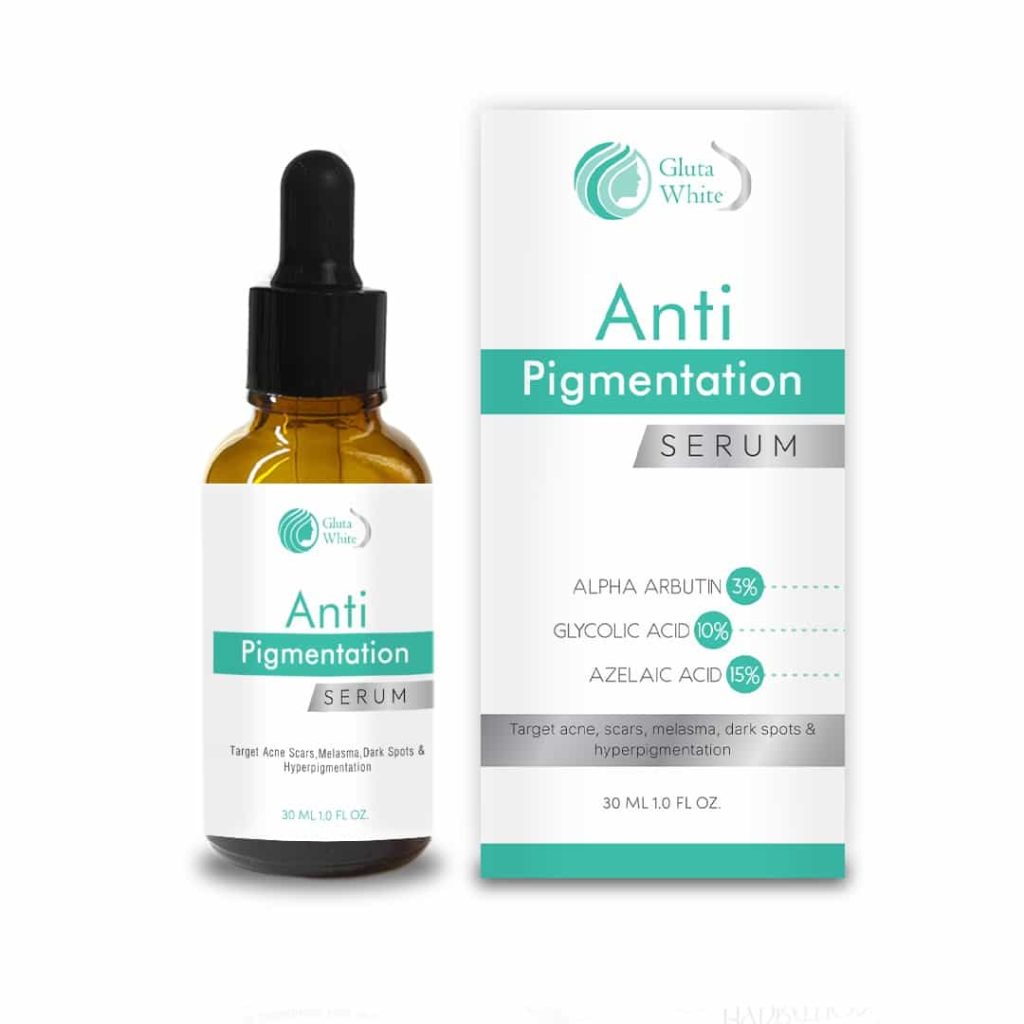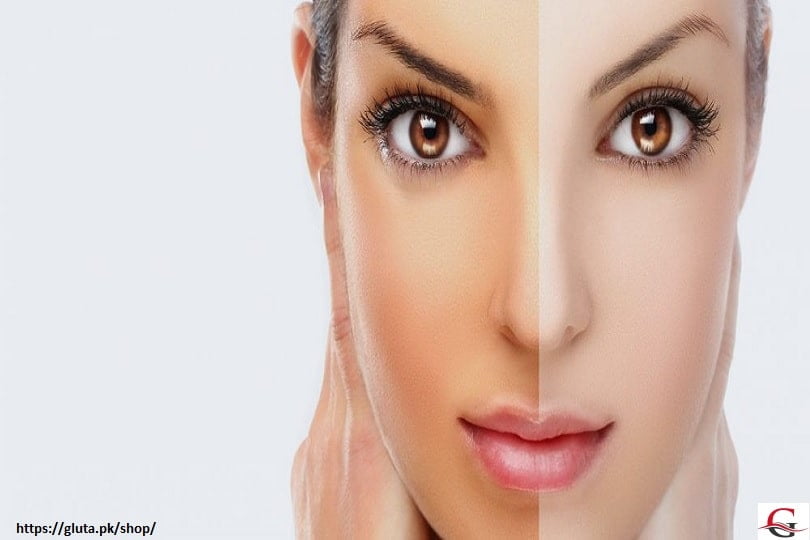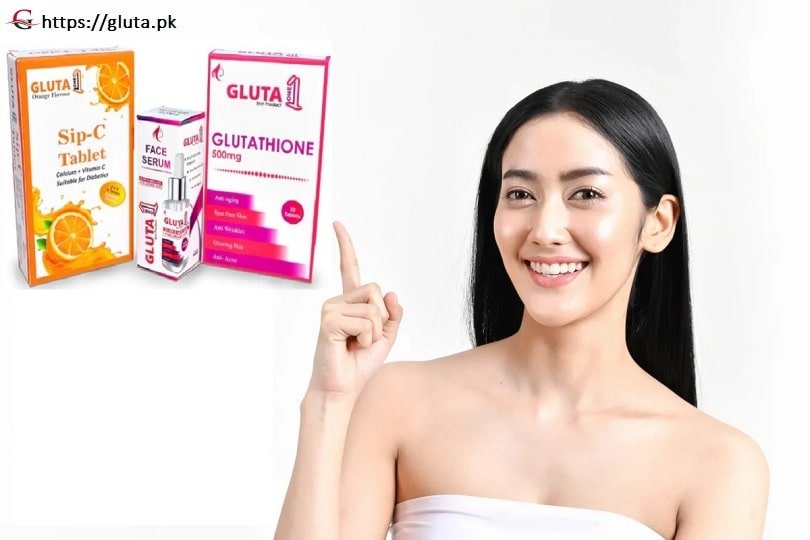


Why Serum is Important
Hyperpigmentation is a multifaceted skin concern that requires targeted and potent solutions for effective treatment. While general skincare products may offer some benefits, specialized serums designed specifically for hyperpigmentation can provide targeted ingredients and formulations to address this issue more effectively. These serums often contain high concentrations of active ingredients such as vitamin C, niacinamide, kojic acid, and alpha hydroxy acids (AHAs), which are known for their ability to brighten the skin, fade dark spots, and promote a more even skin tone.
Finding the right serum tailored to your skin type and specific concerns is paramount for achieving optimal results. Different skin types react differently to ingredients, and certain formulations may be better suited for oily, dry, or sensitive skin. Moreover, considering individual concerns such as acne-related pigmentation, sun-induced discoloration, or hormonal melasma can further guide the selection process.
Choosing a hyperpigmentation treatment serum that caters to your unique skin needs not only ensures better compatibility and efficacy but also minimizes the risk of potential adverse reactions. By investing in a specialized serum that aligns with your skin type and concerns, you can embark on a targeted skincare regimen that delivers visible results, restoring confidence and radiance to your complexion.
Types of Hyper Pigmentation on Face
Hyperpigmentation on the face can manifest in various forms, each with its own characteristics and underlying causes. Here are some common types of hyperpigmentation:
- Sunspots or Solar Lentigines: Also known as age spots or liver spots, sunspots are flat, brown, or black spots that typically appear on areas of the skin exposed to the sun, such as the face, hands, shoulders, and arms. They result from prolonged UV exposure and are more common in older individuals.
- Melasma: Melasma presents as symmetrical patches of brown or grayish pigmentation on the face, particularly on the cheeks, forehead, upper lip, and chin. It is often triggered by hormonal fluctuations during pregnancy, oral contraceptive use, hormone replacement therapy, or sun exposure. Melasma is more prevalent in women and those with darker skin tones.
- Post-Inflammatory Hyperpigmentation (PIH): PIH occurs as a result of skin trauma, inflammation, or injury, such as acne lesions, cuts, burns, or insect bites. It appears as dark marks or patches on the skin that develop after the underlying condition has healed. PIH can affect individuals of all skin types but is more noticeable in individuals with darker skin tones.
- Freckles: Freckles are small, flat spots that are typically light brown or tan in color. They are often genetically determined and tend to be more prominent in individuals with fair skin and red or blond hair. Freckles darken with sun exposure and may fade during the winter months.
- Actinic Keratosis: Actinic keratosis (AK) is a precancerous skin condition characterized by rough, scaly patches or lesions that are often reddish-brown or flesh-colored. AKs develop on sun-exposed areas of the face, such as the forehead, cheeks, and nose, and are more common in individuals with fair skin who have a history of sun exposure.
- Drug-Induced Hyperpigmentation: Certain medications, such as nonsteroidal anti-inflammatory drugs (NSAIDs), antimalarial drugs, chemotherapy agents, and psychotropic medications, can cause hyperpigmentation as a side effect. This type of hyperpigmentation typically presents as dark patches on the face and other sun-exposed areas.
Understanding the specific type of hyperpigmentation affecting your skin is crucial for implementing an appropriate treatment regimen. Consulting with a dermatologist can help accurately diagnose the condition and recommend targeted therapies to address hyperpigmentation effectively.
Why It is Concern For Every Person
Hyperpigmentation is a prevalent concern for many individuals in Pakistan due to several factors specific to the region’s climate, lifestyle, and cultural norms:
- Intense Sun Exposure: Pakistan experiences high levels of ultraviolet (UV) radiation due to its geographical location and predominantly sunny climate. Prolonged and unprotected exposure to the sun’s harmful rays can lead to increased melanin production, resulting in the development of dark spots, sunspots, and melasma on the face and other sun-exposed areas.
- Cultural Practices: Traditional cultural practices in Pakistan often involve spending extended periods outdoors, particularly among agricultural workers, laborers, and individuals engaged in outdoor activities. This increased sun exposure contributes to the risk of developing hyperpigmentation, as the skin is constantly exposed to UV radiation without adequate protection.
- Limited Use of Sun Protection: Despite the prevalence of intense sun exposure, the use of sun protection measures such as sunscreen, protective clothing, and hats is relatively low among many individuals in Pakistan. Lack of awareness about the importance of sun protection and limited access to affordable sunscreen products contribute to this issue, further exacerbating the risk of hyperpigmentation.
- Genetic Predisposition: Certain ethnic groups in Pakistan have a higher predisposition to developing hyperpigmentation due to genetic factors. Individuals with darker skin tones, such as those of South Asian descent, are more prone to melasma and post-inflammatory hyperpigmentation, making hyperpigmentation a common concern among many Pakistanis.
- Hormonal Influences: Hormonal fluctuations, such as those occurring during pregnancy or as a result of hormonal contraception, can trigger the onset or exacerbation of hyperpigmentation in susceptible individuals. Given the cultural significance of childbirth and family planning in Pakistan, hormonal changes associated with pregnancy and contraceptive use contribute to the prevalence of melasma among women in the country.
- Environmental Pollution: Pollution and environmental factors prevalent in urban areas of Pakistan, such as air pollution, dust, and smog, can exacerbate skin inflammation and oxidative stress, leading to an increased risk of post-inflammatory hyperpigmentation and other skin concerns.
Overall, the combination of intense sun exposure, cultural practices, limited sun protection, genetic predisposition, hormonal influences, and environmental factors makes hyperpigmentation a significant concern for many individuals in Pakistan. Addressing this issue requires a comprehensive approach that includes sun protection, skincare practices, and targeted treatments tailored to the specific needs of Pakistani skin types and lifestyles.
Role of Serums in Hyperpigmentation Treatment
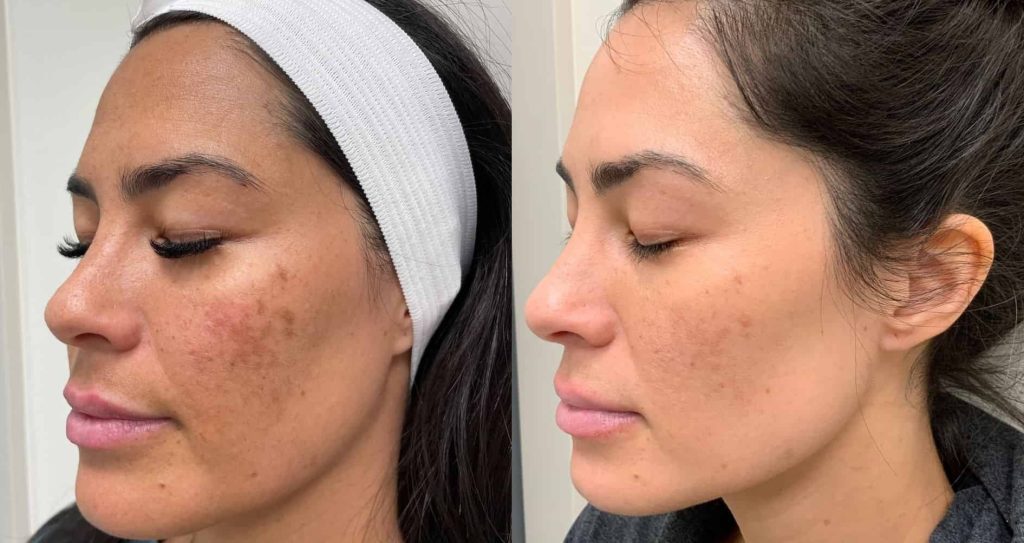
In the realm of skincare, serums have emerged as powerful allies in the quest for radiant and healthy-looking skin. Often touted as the superheroes of skincare, serums are lightweight, highly concentrated formulations packed with active ingredients that target specific skin concerns with precision and efficacy. From tackling hyperpigmentation and fine lines to boosting hydration and promoting a youthful glow, serums offer a multitude of benefits that make them indispensable in any skincare regimen.
Unlike traditional moisturizers or creams, which primarily focus on hydrating and protecting the skin’s surface, serums penetrate deeper into the skin, delivering potent ingredients directly to the source of the problem. This targeted approach allows serums to address a wide range of skin issues, from uneven skin tone and texture to signs of aging and environmental damage.
Key Advantage
One of the key advantages of serums is their ability to deliver high concentrations of active ingredients in a lightweight and fast-absorbing formula. This means that even a small amount of serum can deliver a potent dose of beneficial ingredients to the skin, maximizing efficacy without weighing down the skin or leaving a greasy residue.
Moreover, serums are highly versatile and customizable, allowing individuals to tailor their skincare routine to their specific needs and concerns. Whether you’re dealing with acne, hyperpigmentation, dryness, or dullness, there’s a serum out there designed to address your unique skin concerns.
In the following discussion, we’ll explore the role of serums in addressing hyperpigmentation, one of the most common and persistent skin concerns faced by individuals around the world. We’ll delve into the science behind hyperpigmentation, discuss key ingredients to look for in hyperpigmentation treatment serums, and provide practical tips for incorporating serums into your daily skincare routine. So, if you’re ready to unlock the transformative power of serums and achieve a brighter, more luminous complexion, let’s dive in!
Why Serums Are Particularly Effective For Treating Facial Hyperpigmentation
Serums are particularly effective for treating facial hyperpigmentation due to several key factors:
- High Concentration of Active Ingredients: Serums are formulated with high concentrations of active ingredients, such as vitamin C, niacinamide, alpha hydroxy acids (AHAs), and botanical extracts, which have been shown to effectively target hyperpigmentation. These potent ingredients work to inhibit melanin production, fade existing dark spots, and promote a more even skin tone.
- Penetration and Absorption: The lightweight and fluid consistency of serums allows them to penetrate the skin more deeply compared to thicker creams or lotions. This deeper penetration ensures that the active ingredients reach the deeper layers of the skin where hyperpigmentation originates, resulting in more significant and long-lasting results.
- Targeted Formulations: Serums are often formulated with specific skin concerns in mind, including hyperpigmentation. This means that they contain ingredients and actives specifically chosen for their ability to address melanin overproduction, whether it’s caused by sun damage, hormonal fluctuations, or inflammation. By targeting the root cause of hyperpigmentation, serums can deliver more precise and effective results.
- Fast-Acting Results: Because of their high concentration of active ingredients and efficient absorption, serums typically deliver faster results compared to other skincare products. Many users report noticing improvements in hyperpigmentation, such as lightening of dark spots and a more even skin tone, within a relatively short period of consistent use.
- Customization and Layering: Serums can be easily customized and layered to address multiple skin concerns simultaneously. For individuals dealing with hyperpigmentation along with other issues such as acne or aging, incorporating different serums into their skincare routine allows for a tailored approach to treatment, ensuring comprehensive care for the skin.
Overall, the combination of potent ingredients, efficient penetration, targeted formulations, fast-acting results, and customization makes serums an ideal choice for treating facial hyperpigmentation effectively and efficiently. By incorporating a hyperpigmentation treatment serum into your skincare routine, you can achieve brighter, clearer, and more radiant skin with consistent use.
Key Ingredients to Look For in Hyperpigmentation Treatment Serums
here are some key ingredients commonly found in hyperpigmentation treatment serums and their benefits:
- Vitamin C (L-Ascorbic Acid):
- Vitamin C is a potent antioxidant that helps to brighten the skin, fade dark spots, and even out skin tone by inhibiting melanin production.
- It also helps to protect the skin from environmental damage caused by UV radiation and pollution.
- Look for stabilized forms of vitamin C, such as ascorbic acid or magnesium ascorbyl phosphate, in concentrations of at least 10% for optimal efficacy.
- Niacinamide (Vitamin B3):
- Niacinamide is known for its ability to reduce inflammation, regulate sebum production, and improve skin barrier function.
- It helps to inhibit melanin transfer to the skin surface, thereby reducing the appearance of dark spots and hyperpigmentation.
- Additionally, niacinamide has been shown to boost collagen production, resulting in firmer and more resilient skin.
- Look for niacinamide concentrations ranging from 2% to 5% for effective hyperpigmentation treatment.
- Alpha Hydroxy Acids (AHAs):
- AHAs such as glycolic acid, lactic acid, and mandelic acid are chemical exfoliants that help to remove dead skin cells and promote cell turnover.
- By accelerating the shedding of pigmented skin cells, AHAs can help to fade dark spots and improve overall skin texture and tone.
- AHAs also stimulate collagen production and enhance the penetration of other active ingredients, making them valuable additions to hyperpigmentation treatment serums.
- Look for serums containing AHAs in concentrations of 5% to 10%, depending on your skin’s sensitivity and tolerance.
- Kojic Acid:
- Kojic acid is a natural ingredient derived from fungi that inhibits tyrosinase, the enzyme responsible for melanin production.
- It helps to lighten existing hyperpigmentation and prevent the formation of new dark spots.
- Kojic acid is often used in conjunction with other skin-lightening agents for enhanced efficacy.
- Look for serums containing kojic acid in concentrations of 1% to 4% for optimal results.
- Licorice Extract:
- Licorice extract contains glabridin, a compound that inhibits tyrosinase activity and reduces melanin production.
- It has anti-inflammatory properties that help to calm and soothe the skin, making it beneficial for individuals with sensitive or reactive skin.
- Licorice extract is often included in hyperpigmentation treatment serums for its skin-brightening and antioxidant benefits.
When choosing a hyperpigmentation treatment serum, look for products that contain a combination of these key ingredients to maximize efficacy and address multiple aspects of hyperpigmentation. Additionally, consider your skin type, sensitivity, and tolerance when selecting the concentration of active ingredients to ensure optimal results with minimal risk of irritation.
Skin Type Concerns
Consider your skin type (dry, oily, combination, sensitive) and specific concerns (hyperpigmentation, acne, aging) when choosing a serum. Look for formulations that are suitable for your skin type and address your primary concerns without causing irritation or exacerbating existing issues.
Skin Type Concerns
Consider your skin type (dry, oily, combination, sensitive) and specific concerns (hyperpigmentation, acne, aging) when choosing a serum. Look for formulations that are suitable for your skin type and address your primary concerns without causing irritation or exacerbating existing issues.
Ingredients
Check the list of ingredients carefully to ensure that the serum contains key ingredients known for their efficacy in treating hyperpigmentation, such as vitamin C, niacinamide, alpha hydroxy acids (AHAs), kojic acid, licorice extract, and arbutin. Avoid products with potentially irritating or sensitizing ingredients, such as artificial fragrances, alcohol, and high concentrations of exfoliating acids, especially if you have sensitive skin.
Formulation & Texture
Consider the formulation and texture of the serum, as it should be lightweight, non-greasy, and fast-absorbing for optimal comfort and usability. Serums with a water-based or gel-like consistency are generally well-suited for all skin types and can be layered with other skincare products without feeling heavy or occlusive.
Packing and Stability
Pay attention to the packaging of the serum to ensure that it protects the active ingredients from degradation due to air, light, and heat exposure. Look for serums packaged in opaque or dark-colored bottles with airtight pumps or droppers to preserve the stability and potency of the formulation over time.
Product Reputation
Research customer reviews and testimonials to gauge the efficacy, safety, and user experience of the serum. Look for reputable brands with a track record of producing high-quality skincare products backed by scientific research and positive customer feedback.
Price and Value
Consider your budget and the overall value for money when choosing a hyperpigmentation treatment serum. While some serums may be more expensive due to their premium ingredients or brand reputation, others may offer comparable results at a lower price point. Compare prices, sizes, and concentrations of active ingredients to determine the best value for your skincare investment.
Availability of Serum
Take into account the availability and accessibility of the serum in the Pakistani market. Look for products that are readily available online or in local stores to ensure convenient purchasing and replenishment.
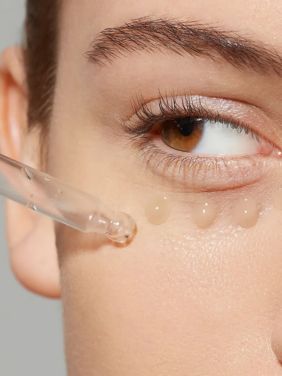
Conclusion
In the article, we’ve explored the importance of addressing hyperpigmentation concerns with specialized serums tailored to individual skin types and concerns. Key points covered include:
- Understanding hyperpigmentation: We discussed the causes and types of hyperpigmentation, emphasizing its prevalence in regions like Pakistan due to factors such as intense sun exposure and genetic predisposition.
- Role of serums: Serums, with their high concentration of active ingredients and targeted formulations, were highlighted as effective solutions for treating facial hyperpigmentation. Ingredients such as vitamin C, niacinamide, and alpha hydroxy acids (AHAs) were discussed for their efficacy in brightening the skin and fading dark spots. Brightening serum is available in Pakistan if you are looking forward to explore it.
- Factors to consider when selecting serums: We outlined important factors to consider, including skin type, ingredients, formulation, and budget, to ensure optimal results and compatibility with individual skincare needs.
- Practical advice for incorporating serums: Tips were provided on how to incorporate hyperpigmentation treatment serums into a daily skincare regimen, emphasizing consistency, proper application techniques, and the importance of sun protection.
Readers were encouraged to take proactive steps towards addressing hyperpigmentation concerns by incorporating specialized serums into their skincare routine. By choosing serums tailored to their skin type and concerns, they can effectively target dark spots and achieve a brighter, more even complexion.
Additionally, the importance of consulting with a dermatologist or skincare professional for personalized advice and treatment recommendations was reiterated. Dermatologists can provide expert guidance, assess individual skin conditions, and recommend appropriate skincare products or procedures to address hyperpigmentation effectively.
In conclusion, taking proactive steps, such as incorporating specialized serums and seeking professional advice, can empower individuals to effectively manage hyperpigmentation and achieve clearer, more radiant skin.
References:
FAQs

Nadia is a creative and driven individual with a passion for writing and a talent for product development. Born and raised in Pakistan, Nadia always had a flair for creative expression and was drawn to the world of content creation from a young age.
After completing her education in journalism and creative writing, Nadia embarked on a career as a content creator, working for several prominent publications and digital media companies in Pakistan. Her work quickly gained recognition for its innovative approach and compelling storytelling, and she soon became known as one of the most talented and influential writers in the industry.
In her role at gluta.pk, Nadia is responsible for creating engaging and informative content that helps customers learn about the company’s products and make informed purchasing decisions. She also works closely with the product development team to develop and launch new products that meet the needs and preferences of gluta.pk’s customers.
